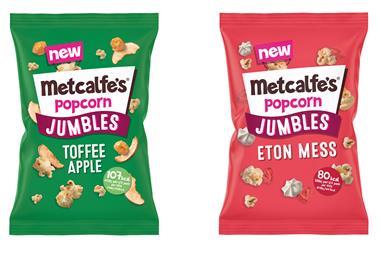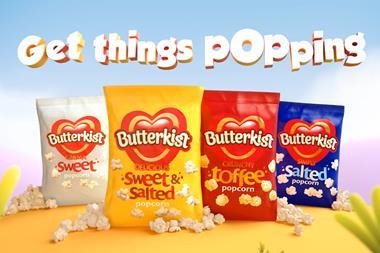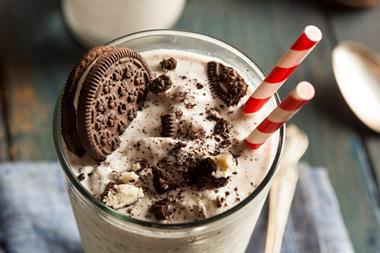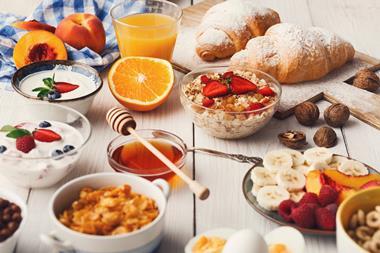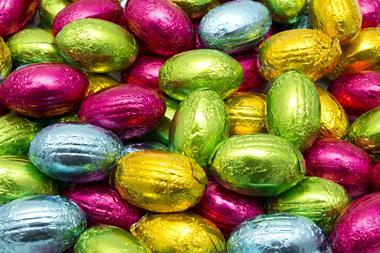The UK is a nation of snack lovers, but today’s shoppers are becoming increasingly discerning when it comes to hunting for hunger fillers.
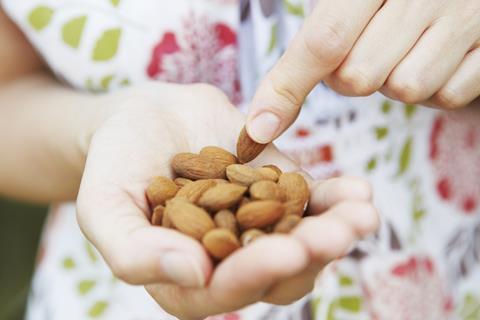
They might be small in stature, but these days snacks certainly offer more than a bite-sized opportunity for convenience retailers to cash in on.
In fact, according to Mintel’s 2019 Convenience Stores report, snacks are the most purchased food-to-go items, with 82% of Brits who buy food to go saying they typically buy snacks, and 95% of British adults claiming to have eaten snacks in the two weeks to March 2019.
However, it’s a category on a journey, with UK shoppers increasingly demanding more from their snacking products than just quick fixes for rumbling tummies. Mintel research analyst Anita Winther explains: “Snacking is a ubiquitous habit among Brits, underpinned by a raft of need states. Snacking has, however, evolved beyond just being a means to appease hunger pangs, with many reaching for snacks to fulfil emotional needs and improve their mood.”
Snacking’s growing appeal to UK consumers has certainly not been lost on the health authorities, with the category receiving calls for further legislative action of late. As the government mulls over plans to ban promotions of foods and drinks high in fat, sugar and salt (HFSS) by price and by location, England’s outgoing chief medical officer Dame Sally Davies last month urged MPs to take heed of a further set of “bold” recommendations which could have a significant impact on the snacking category if implemented. These included the introduction of standardised packaging for sugary foods and a ban on eating and drinking on urban public transport.
Her calls come at a time when consumer demand for healthier snacking products has arguably never been higher, and manufacturers and retailers are working hard to respond to it.
According to HIM, 39% of food-to-go convenience store shoppers now consider a range of healthy options and alternatives to be important in store.
KP Snacks trading director Matt Collins says the healthy snacking occasion specifically is growing in value at 10.4%, “which is much faster than other categories, and 29% of CSN (crisps, snacks and nuts) consumers look for healthier types of snacks either all or most of the time”.
Costcutter Supermarkets Group (CSG) category director Mike Owen claims that healthy snacks are one of the biggest growth areas of 2019.
This chimes with the experience of Costcutter Brunel University store manager Arnaud Leudjou, who says healthy snacks are one of the fastest-growing areas in his store. As such, he has introduced a variety of new healthy snacking ranges including a wholesome bagged nut and fruit and seed offer, and expanded his range of healthy plant-based crisps including lentil chips, quinoa and kale puffs and hummus chips.
“There is huge demand for healthy snacks among our student customer base, but healthy clearly means different things to different people,” he says. “Wholesome and natural products are key in our store, something which is demonstrated by the success of our new fixture of healthy snacking products such as bagged nuts, seeds and dried fruits. The whole thing was sold out by the end of the first weekend.
“However, it continues to be the wholesome products that are coated in chocolate which are the fastest sellers. In our store at least, shoppers still want those snacks to provide taste and flavour, too, even if it means consuming a little extra sugar,” he adds.
To tap into the opportunity for healthy wholesome snacking products, CSG’s Co-op own brand range now includes products such as satay chicken snack packs with chilli, egg & spinach pots and falafel & hummus snack packs.
“One of the biggest growths in this category has been towards pre-prepared fruit and salads, where demand has more than doubled in the past two years,” CSG’s Owen points out.
Another retailer who can attest to this trend is Peter Patel, owner of a Costcutter store in Brockley, London, where a growing chilled vegan range, including filling snacks such as falafel bites, dips and vegan cheese portions, has helped him become a destination for heath-conscious consumers on the lookout for a better bite.
“Three years ago we started out with two shelves of vegan products in the chiller, now that has expanded to a dedicated 3.75m chiller with 30 shelves, and demand just keeps on growing,” Peter says. “As I’m not vegan myself the range is driven by customer requests.”
According to Trek, whose range is “completely vegan containing natural plant-based protein”, an estimated 3.5 million Brits now follow a free-from or vegan diet – up 360% on 10 years ago.
Peter can certainly believe it. “The range’s success has been a real revelation to me and what’s really interesting is that from talking to my customers I would say that about 75% of the people who are buying these vegan snacking products are not full vegans, but are choosing to dip and out of the category, because they perceive many of the products to be healthier than traditional snacking products and also better for the environment, while being tasty and filling at the same time,” he says.
Manufacturers respond to kids’ daily snacks cap

The government’s current snacking campaign focusing on the recommendation for parents to cap kids’ snacks at two snacks of 100 calories or fewer a day has led a number of the UK’s major snack manufacturers to reformulate or develop new ranges of convenient and permissible snacking formats this year.
The KP Snacks portfolio includes 29 products that contain 100 calories or fewer per pack including Pom-Bear, Hula Hoops Puft, Skips, Popchips and Space Raiders.
As part of its ‘Taste for Good’ scheme it is also working to reduce saturated fat and sodium, as well as removing artificial sweeteners, colourings and flavourings from products.
Burtons Biscuits is following suit, having launched Maryland Chocolate Cookie Bars (Maryland’s first chocolate biscuit bar) and Maryland Oaty Cookie Bars which offer two ‘treatier’ single portion snack products, while Jammie Dodgers’ new jam & yogurt snacks offer 97 calories per portion.
Earlier this year Mondelez International announced that it was bringing its chocolate and biscuit products typically bought for children and families under 100 calories.The new calorie cap will apply to portion-controlled packs of some of the company’s best-known products, with bars of Fudge, Curly Wurly, Chomp and Barny sponge bears set to be brought under 100 calories by the end of 2020, while bags of Cadbury Mini Fingers and Cadbury Animals are also set to comply soon.
Change in eating habits
This growing demand for healthier, wholesome snacks can also be explained by the fact that an increasing number of time-strapped UK shoppers are seeking out snacks as meal replacements, HIM claims. This is backed up by Pladis data which reveals that nine out of 10 shoppers now claim to snack multiple times every day. Of these, 7% forego meals altogether and simply rely on snacks to keep them going.
Pladis UK & Ireland customer marketing director Stuart Graham elaborates: “The needs of modern shoppers are continuing to evolve. And, as consumers move away from traditional eating patterns, such as three set meals a day, to more frequent, smaller and less rigid eating occasions, snacking becomes an even bigger opportunity for convenience store owners.”
Paul Samways from Natural Balance Foods, producer of the Trek brand, agrees: “Consumer perceptions have taken a momentous shift in the past few years, and the macro trend of health and well-being has had a huge impact on attitudes towards food and health in general, not to mention the snacking industry.
“There is a constant influx of new diet and eating trends, with a notable recent one being the demand for natural ingredients, which extends to natural protein. This can be linked to the rise of clean eating, a trend which has been fuelled by the rise of Instagram and ‘healthy’ influencers who portray an active healthy-eating lifestyle,” he adds.
“The term #cleaneating has been used on Instagram more than 37 million times and the trend continues to be buoyed by concerns about processed foods and a desire to know more about exactly what is in our meals and snacks.”
Protein has been a growing trend in the snacking market for some time now, and suppliers claim its success is showing no signs of slowing down as shoppers buy into it for a variety of reasons, from helping them to lose weight by keeping them feeling fuller for longer, to toning up in the gym, or just to lead a healthier lifestyle.
Grenade’s head of category Mike Simons says the protein bar market specifically remains in growth as its original association with young male gym-goers evolves. The profile for the category has changed considerably, with a “rapid influx of female consumers, in addition to consumers across all age and social demographic groups”.
Elsewhere, protein-rich cheese snacks are also in growth across both morning and afternoon occasions, according to Mini Babybel group brand manager Gaelle Vernet. Cheese snacking continues to grow in value (+11%) and volume (+10%) in the convenience sector and is now worth more than £64m, she points out.
“Consumers are more engaged with the practicality of cheese at snacking times, fuelling demand for convenient and versatile formats while also delivering the need for healthier snack options,” she adds.
Top tips on snacking display: keep it simple and offer two-item deals

There is a key opportunity for retailers to make more of the snacking category with two-item deals, Natural Balance Foods’ Paul Samways adds.
“The latest Healthy Snacking Report from HIM shows that alternative, two-item deals such as combining a snack with a drink, would entice shoppers. In fact, 72% of healthy snacking shoppers want product link deals, so there is a real opportunity for retailers to drive sales through alternative deals and promotions,” Samways says.
He advises merchandising snack bars, flapjacks and protein bars next to hot drinks or in the food-to-go aisles to encourage impulse purchases alongside products from different categories.
Mondelez International’s Susan Nash points out that driving sales in the snacking sector is all about keeping it simple.
“Retailers can do this by merchandising shelves clearly with a logical flow, using well-known brands to signpost the segments within each category. They should carry a range broad enough to offer plenty of choice, but avoid duplication of too many brands offering the same proposition.
“Finally, the range should always reflect the seasons – particularly at key spikes such as Christmas and Easter – to inspire additional purchase and disrupt shopper behaviour.”
The lowdown on sugar
Another movement that looks set to continue making waves in the convenience snacking category in the year ahead is low or lower sugar, says Mondelez International trade communications manager Susan Nash.
“More than a third of consumers are actively cutting down their sugar consumption, making reducing sugar one of the biggest priorities for shoppers,” she says.
Grenade’s Simons adds: “Sugar levels are a primary health concern among the majority of shoppers. Low sugar is a fundamental part of the Grenade Carb Killa offering, and all our products have less than half a teaspoon of sugar, which is about 10 times less than a standard chocolate bar.”
But, as Londis retailer Mike Dorey of Eastcombe Stores in Stroud, Gloucestershire, attests, in order to be truly successful low sugar can’t mean low taste. “Snacking is a growing category for us and healthier snacks are definitely a big driver, helped by the fact that choosing a healthier snack doesn’t mean compromising on taste anymore. Cadbury’s new 30% less sugar Dairy Milk, for example, is proving really popular in store, and the vast majority of feedback I get from shoppers is, ‘I can’t believe how good it tastes’,” he says.
Pladis says healthier biscuit options saw “impressive” growth of 4.5% last year and are now the largest sector in the sweet biscuits category, worth £562m. This summer it launched McVitie’s Granola Oat Bakes – a range which contains 35% less sugar than the average oat biscuit and is high in fibre and suitable for vegans. A ‘better-for-you’ range of 100 calorie baked bars was also launched under the Go Ahead brand this year.
Mike points out that demand for the likes of healthier crisps are also on the up in his store. “We recently expanded our range of humus crisps and lentil chips,” he adds. “I wouldn’t say these are bought by any specific shopper types anymore, it seems like they appeal across the ages, perhaps because they genuinely taste good with many of them offering more exotic spices and flavours than your regular cheese and onion,” he adds.
Price is important, though, Mike warns. “People don’t tend to buy a ‘healthy’ version of an existing brand if the price is much higher. We had an added protein variant of a big-name chocolate brand in a few months ago which was priced higher than the regular ones and they just didn’t sell so we delisted them.
“If we, as an industry, want people to migrate over to healthier snacks then the price has got to be accessible. A perfect example of this is the Graze boxes. My customers love them, but when they’re not on special offer they just sit there. However, as soon as Londis puts them on promotion they fly off the shelves,” he says.
NPD From Nudie
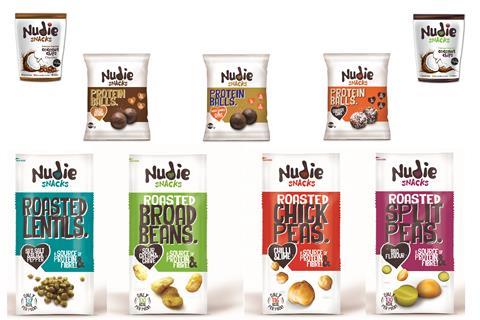
Nudie Snacks introduced nine plant-based wholefood snacks in a range of formats and flavours last month.
Designed to broaden consumers’ snacking options, the range comes in the following formats and flavours:
Shot packs: roasted pulses; sour cream & chive broad beans; BBQ split peas; chilli & lime chickpeas; and salt & pepper lentils.
Toasted coconut chips: salt & sweet; and chocolate.
Snack packs: carrot cake; salted caramel brownie; choccy orange; and peanut butter protein balls.
Nudie Snacks director Ross Currie says: “Using trends within the food industry we have brought to the market an innovative range of snacks that not only taste great and look great, but boast high plant-based protein and fibre, vegan and gluten-free attributes.”




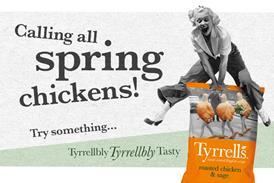
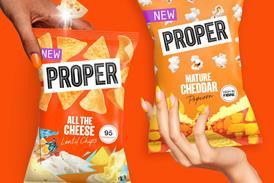





![WG-4003[58]](https://d2dyh47stel7w4.cloudfront.net/Pictures/274x183/4/5/1/353451_wg400358_6083.jpg)




